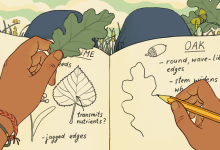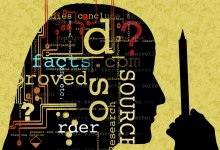Science
Explore and share tips, strategies, and resources for helping students develop in science.
How Sketching Supports Learning in Science
When high school students patiently sketch something like the growth of a plant over time, they learn skills that go beyond science.Exploring Before Explaining Sparks Learning
New elementary science teachers can build student engagement and enhance learning by using the explore-before-explain approach.Your content has been saved!
Go to My Saved Content.How to Set Up Formative Assessments for Summative Success
Assessing students’ learning during a class or project can help you adapt your teaching and guide them to meet their goals.179Your content has been saved!
Go to My Saved Content.Guiding Students to Use AI to Build Science Writing Skills
By leveraging AI, teachers can boost students’ motivation to research and create innovative presentations.251Your content has been saved!
Go to My Saved Content.Why Kids Should Nature Journal at All Grade Levels
A 2023 review makes a strong case that hands-on observation of natural phenomena has both academic and psychological benefits.Why Students Should Write in All Subjects
Writing improves learning by consolidating information in long-term memory, researchers explain. Plus, five engaging writing activities to use in all subjects.19.2kYour content has been saved!
Go to My Saved Content.Applying Literacy Standards Across Content Areas
High school teachers in all classes can help students strengthen their reading, writing, speaking, and listening skills.Encouraging Students’ Curiosity With Animal Observations
Observing animals provides an engaging way for students to build their critical thinking skills and curiosity.Why Science Class Is the Perfect Place to Build Language Fluency
From word walls to peer presentations, these classroom strategies help students thrive as scientists and English learners.384Your content has been saved!
Go to My Saved Content.Designing Science Inquiry: Claim + Evidence + Reasoning = Explanation
The Claim, Evidence, Reasoning framework is a scaffolded way to teach the scientific method.30.6kYour content has been saved!
Go to My Saved Content.A Triangular Approach to Science Instruction
Combining science literacy, data science, and hands-on learning helps get elementary students engaged in science lessons.Teaching the Concept of Equity Through Gardening
Plants can illustrate how different people need different things to be nourished—and how equality and equity differ.9.7kYour content has been saved!
Go to My Saved Content.Exploring Campus With an Environmental Lens
When freshmen take a science course that immerses them in their school’s culture and physical space, they develop a sense of belonging—and a deep connection to the mission.Combining Science and Music for Deeper Learning
Elementary music teachers can incorporate scientific concepts into lessons so students get a multilayered learning experience.












